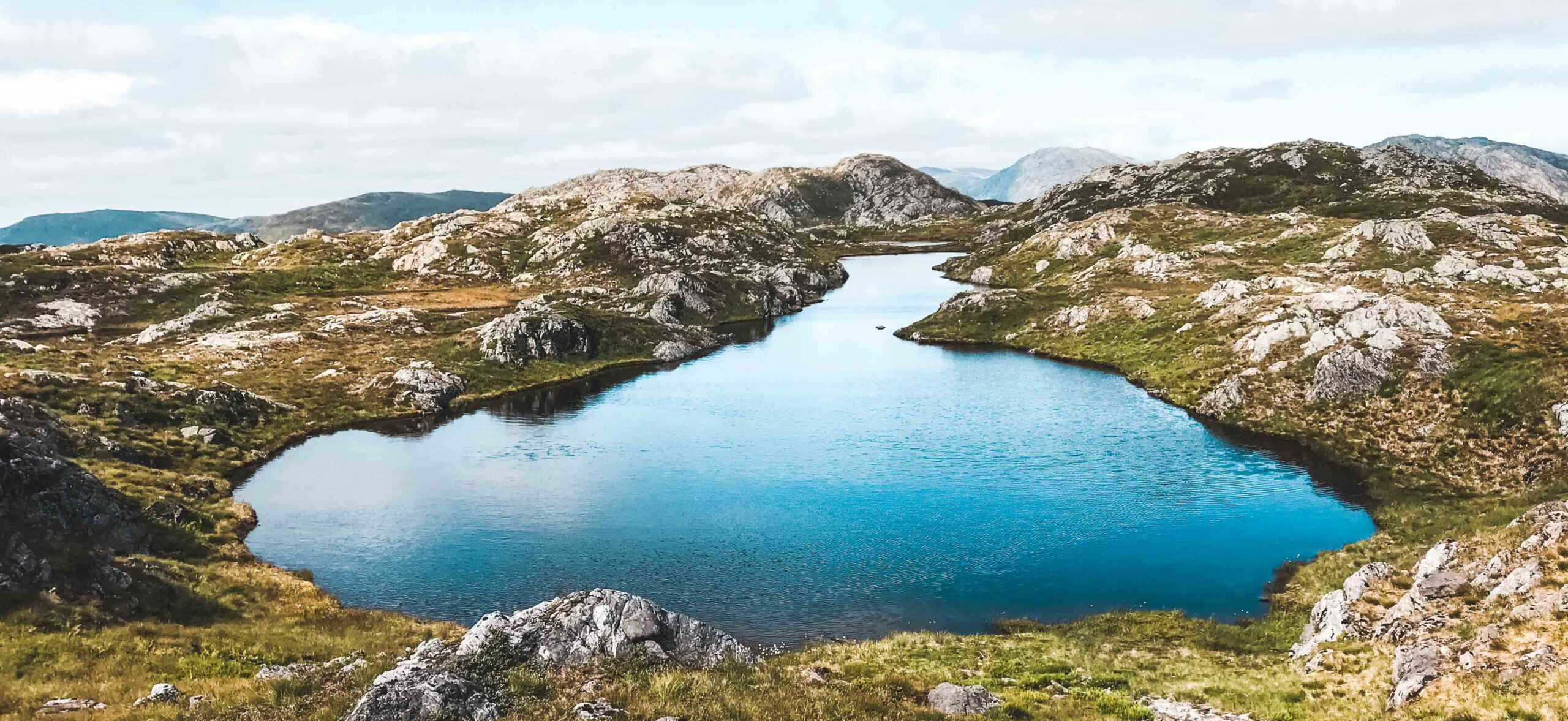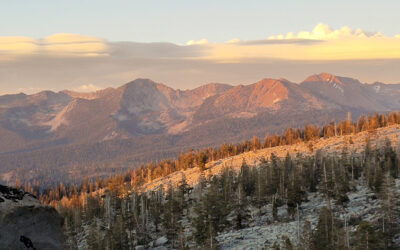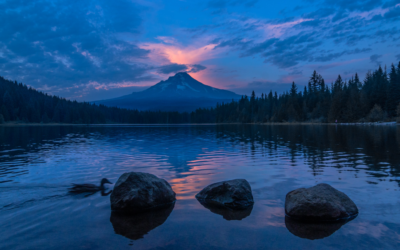Photo credit © Bill Oxford on Unsplash
Ambition: The Power of a Big Idea and Sticking to it
Editorial Perspectives
August 2021 | Volume 27, Number 2
It was the final day of WILD9 in Mérida, Mexico 2009 and we were closing a highly successful 9th World Wilderness Congress. Suddenly we received the news that our featured closer, a high-profile conservation leader who had promised a substantive announcement to close the Congress, had to cancel and offered no replacement. Harvey Locke and I were in the Congress cafeteria as 1,800 delegates began to stream into the nearby plenary hall for the closing session. We quickly conferred, considered options, and decided to make our own, and unexpected, announcement.
Months before, Harvey had raised with me the proposition that protected area targets needed to be much more ambitious and scientifically-based than the politically-correct targets the conservation establishment was using (at that time still 10% terrestrial and 0% marine, and soon to be 17% terrestrial and 10% marine). We both knew that the best conservation science and traditional knowledge insisted that approximately half of the earth’s lands and seas needed to be protected and high-functioning if we were to assure continuation of the ecological services that support all life on earth. In addition to the science, and as our indigenous elders tell us, relationship is also important. We need a reciprocal relationship with wild nature that gives us everything. This was amply illustrated a few years before at the 8th World Wilderness in Alaska in 2005 when Herb Norwegian, Grand Chief of the First Nations Dehcho in Canada, called for all traditional peoples to advocate for protection of at least half of their territories (Cajune, Martin, and Tanner 2008).
Harvey agreed to extemporaneously announce, and justify, the aspirational vision to protect and interconnect half the Earth’s lands and seas. Nature Needs Half (natureneedshalf.org) was born. It was big, unexpected, and new. It was also designed differently, as an “open architecture, movement-style initiative with no proprietary ownership, just a steering committee to maintain standards. We were committed to the announcement yet a bit apprehensive, but the delegates were ready. It had been an ambitious Congress with many practical outcomes and calls to action, and this vison was a fitting send-off. Kenton Miller, former Director-General of the IUCN, and father of the original target of 10% protected terrestrial, asserted his approval from the floor. The great marine explorer and scientist, Sylvia Earle, immediately came up to me as I left the platform and said she had “an issue” with our announcement. I gulped and asked her to explain. “It’s not enough,” she said. Relieved, I hugged her.
But, in general, the trouble started. We had metaphorically thrown the visionary cat amongst the conservation-establishment pigeons. The feathers flew! We received emails from conservation professionals in institutions and NGOs asserting that such a target was impossible ecologically and/or politically. One such message from a prominent institutional figure even asserted that although the target may be scientifically correct, “we cannot insist for it because we will be laughed at!”
Integral to this call to “protect half” was that biodiversity and climate goals needed to be considered together, not separately. The Rio Earth Summit (1992) created a convention to deal with each issue. However, over time, these conventions drifted apart and became distinct agendas. They needed to be pulled together, therefore one aspect of WILD9 planning was to raise for the first time on a global conservation platform the need to integrate work on these two existential threats. So, as part of the planning for WILD9, Harvey and Brendan Mackey produced The Nature of Climate (Locke and Mackey 2009), one of the first formal calls for why ambitious (and scientifically-based) protection targets for biodiversity needed to be integrated with climate goals. Such a proposition was significant and way ahead of establishment conservation because at that time the climate movement had captured the general environ- mental movement. This made climate the priority of the institutional environmental movement, with biodiversity conservation the neglected cousin. Climate was all about energy and emissions, and what are now called nature-based solutions were considered quaint and old-school.
Fast-forward thru the next ten years. IJW came out with the first mainstream paper (Sylvén 2011) specifically devoted to and explaining the HALF concept. The NNH team persisted, yet, while many scientists agreed, few others (especially the big NGOs) would accept the obviously critical and important need for ambitious protected area tar- gets that would also be wedded to climate goals. Continuing our focus on this, we again made it part of the planning for the 10th World Wilderness Congress (WILD10 in Spain, 2013), and the Parks journal agreed to publish a comprehensive rationale for the HALF proposition (Locke 2013).
The tide began to strongly turn after Professor Ed Wilson published Half Earth in 2016, primarily a biodiversity-based call for HALF, and the weight of his name and scientific reputation provided a doorway to HALF for use by the latecomers. Most professionals began to understand that the HALF concept specifically responded to both massively accelerating species loss and to climate disruptions. Finally, “ambition” began to assume a place at the global conservation table. The NNH network expanded and the Wyss Campaign for Nature (www.wysscampaign.org) came out with the “30% by 2030” initiative. Soon, many in that movement began to recognize that “30 by 30” was a milestone on the way to HALF. The scientific underpinnings came thick and fast, with the stalwart Dr. Reed Noss publishing original research and the IUCN Task Force on “Beyond the Aichi Targets” (referring to the Convention on Biodiversity) produced the most extensive survey ever conducted of area-based conservation targets (Woodley et al 2019).
The pace of change is still accelerating…and it needs to. In September 2020, the UN Summit on Biodiversity produced the Leader’s Pledge for Nature (www.leaderspledgefornature.org) in which
84 nations agreed to a “united signal to step up global ambition and encourage others to match their collective ambition for nature, climate and people…” In early 2021 a “High Ambition Coalition” (www. hacfornatureandpeople.org) of 60 governments was created that recognized the need for both significantly increased ambition to protect nature and to unite biodiversity and climate solutions. In May 2021, the 12 biggest global environmental institutions were all represented in one paper, A Nature-Positive World: The Global Goal for Nature (Locke et al 2021), in which was stated: “In terms of spatial conservation, there is widespread scientific support for the idea of protecting and conserving at least half the world to meet biodiversity and ecosystem services objectives or combined biodiversity and carbon objectives.”
In addition to the #1 priority being to protect the remaining wild nature as the most cost-efficient and effective way to address species loss and climate breakdown (and help avert future pandemics), the need for massive restoration is now also front and center. For example, and additionally in 2021, we saw the launch of the UN DECADE on Ecological Restoration(www.decadeonrestoration.org); the rebrand- ing of a major NGO, Global Wildlife Conservation, to Re:wild (www.rewild.org), (with a collaborative conservation strategy championed by a major cadre of global social-influencers headed by Leonardo DiCaprio); and, as a result of the planning for WILD11, the first Global Rewilding Alliance (www.rewil– dingglobal.org), the motto of which is “Protect, Restore, Rewild”.
I relate this story because it illustrates three essential and instructive lessons, what I call “essential powers”, for those of us whose work is wedded to protecting and restoring wild nature for the good of all life on earth. First, the power of persistence. Change is not easy. It needs to overcome the entropy and exclusionary attitude too-often characteristic of institutional thinking and agendas. Hang in there! Second, the power of truth. Of course, truth is always important but when we consider today the rapidly destabilizing planet we created; we have no time for anything except truth. And third, the power of relationship. We are all in this together, so the synergy of right relationship between people, and between people and nature, is the most effective way to change course. A failed relationship with nature is not an option!
In the process of humankind evolving and developing our necessary well-being and our economy, we also created a dilemma for ourselves. Our planet is seriously trashed and headed toward ecologi- cal tipping points that are as catastrophic as they are systemic and unpredictable. We need to change now, and big time. The era of debate defer, and delay is over. The need for ambition is now. We need to step up. We need to be powerful.
Empowerment, through information, strategy, and vision, was one of the core reasons we founded the IJW in 1995. This issue, Volume 27, number 2, continues in that tradition and expands what is now
the world’s largest, most freely available archive on global wilderness and wildland-related subjects. In this issue, Roger Kaye discusses preserving wildness in the Anthropocene. Chris Armatas and others explore shared stewardship and partnerships through empathy. Howard Smith, Richard Discenza, and Robert Dvorak present a pandemic inspired research agenda. And Vladimir Bocharnikov and Evsey Kosman consider indicators for regional policy making in Russia,
VANCE MARTIN is a founding associate editor of IJW, president of the WILD Foundation (USA) and director of Wilderness Foundation Global (South Africa); email: vance@wild.org.
References
Cajune, J. V. G. Martin, and T. Terry. 2008. Protecting wild nature on native lands: Case studies by Native peoples from around the world. Volume 1. The Wild Foundation. Retrieved from https://wild.org/wp-content/up- loads/2011/03/Protecting-Wild-Nature-on-Native-Lands.pdf
Locke, H. 2013. Nature needs half: a necessary and hopeful new agenda for protected aeras. PARKS 19(2): 13-22.
Locke, H. and Mackey, B. 2009. The nature of climate change: Reunite international climate change mitigation ef- forts with biodiversity conservation and wilderness projection. International Journal of Wilderness 15(2): 7-13, 40.
Locke. H, J. Rockström, P. Bakker……P. Zurita. 2001. A nature-positive world: the global goal for nature. Retrieved from https://f.hubspotusercontent20.net/hubfs/4783129/Nature%20Positive%20The%20Global%20Goal%20for%20Na- ture%20paper.pdf
Sylven, M. 2011. Nature needs half: a new spatial perspective for a health planet. International Journal of Wilderness 17(3): 9-11, 16.
Woodley, S. H. Locke, D. Laffoley, K. MacKinnon, T. Sandwidth, and J. Smart. 2019. A review of evidence for area- based conservation targets for the post-2020 global biodiversity framework. International Union for Conservation of Nature. Retrieved from https://www.iucn.org/sites/dev/files/a_review_of_evidence_for_area-based_conser- vation_targets_for_the_post-2020_global_biodiversity_framework_-_final.pdf
Read Next
Preserving the Wildness of Wilderness in the Anthropocene
Wildness: What is this evocative and elusive, primal and unquantifiable quality of Wilderness? Why is it so threatened in the non-analogue future we face? Why and how should we perpetuate it?
The Evolution Of Management Science To Inform Carrying Capacity Of Overnight Visitor Use In The Yosemite Wilderness
To avert overcrowding, mitigate biophysical impacts, and ensure quality wilderness experiences, managers utilize a suite of management tools, including inventories and assessments of wilderness campsite and social conditions, to evaluate changes to use and condition over time.
Crowding Perceptions at Wilderness Areas on Mount Baker, Washington and Mount Hood, Oregon
Investigating the population of recreational mountaineers on two Cascade peaks to gain a better understanding of who the climbers are and to investigate the perceived crowding levels.



